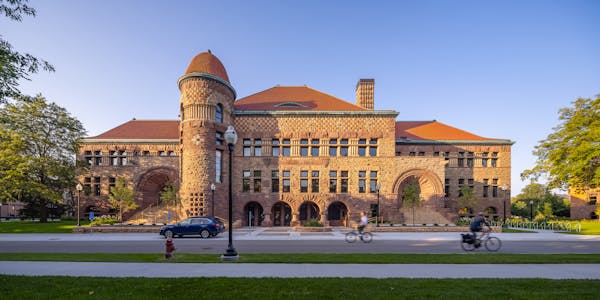We recently learned that the Ben Franklin store in Grand Marais had been sold. Don't worry. It's going to stay open, and it won't change its name.
Why do Minnesotans care?
Two reasons: It's always nice to hear that a local landmark will endure. And boomers are nostalgic about variety stores, better known to us as the five-and-dime or the dime store.
No matter where you grew up, you probably had one close. Woolworths. W.T. Grant. Kresge. Good ol' Ben. They were the mainstays of commercial districts across the country, and their disappearance is one of the sadder tales in decline of the small-town main street.
Dime stores were chains, which allowed them to offer cheaper prices than the mom-and-pop shops that came before them because they bought in bulk. Dime stores had buyers in the big cities, so they could introduce new styles quickly. And, even better, many of them had a lunch counter.
Shopping at a Woolworths was an experience that no small-town merchant could match, from the scent of the hamburgers on the grill to the corporate soundtrack pouring from speakers embedded in the ceiling. (For decades, Kresge commissioned music to encourage happy shopping, and shipped the records to individual stores.) In larger towns, dime stores might have something as exotic as an escalator.
While we may be nostalgic about the five-and-dimes, they were considered by some to be the Walmart of their day, driving smaller local shops out of business.
The 1920s saw a significant anti-chain-store movement. In 1928 the Associated Press quoted Sen. Smith Brookhart of Iowa, a dedicated chain-hater, as saying, "the neighborhood merchant is combatting the greatest evil of the present age in chain stores." The National Association of Retail Druggists, still steamed in 1938, blasted the chains as a "privilege-seeking few [who] seek ... the dictatorship of big money."
Some states passed anti-chain legislation, including special taxes. But public support for the chains (and perhaps indifference to anti-chain laws) won the day.
And while it's likely that the variety stores may have indeed displaced a few home-town merchants, they often coexisted, because Main Street had its social order.
You went to the five-and-dime to get socks and thread. They also sold dishes, but you probably went to the department store to buy those. They had some toys, but the selection was better at the drugstore. They had seeds, but you'd buy your gardening tools at the hardware store.
The five-and-dime wasn't your first choice and it wasn't your last. It was convenient and dependable.
What's in a G?
Minnesota towns might have had one or more of the big chains, but we never had a Kress, and our towns are the poorer for their absence.
And, no, it's not a typo. I'm not referring to S.S. Kresge, but S.H. Kress. The two chains staked out their territories and stayed out of each other's way. Kresge concentrated on the Midwest and Northeast. Kress built its stores in the South and the West.
Kress, however, put more into its buildings, hiring well-regarded architects to design structures that referenced the architectural traditions of the regions, or brought bright new modern ideas to tired towns. They built big, with speculative office blocks rising above the stores.
Sadly, dime store chains that worked the Minnesota side of the street left few monuments.
A downtown draw
The variety stores weren't limited to small towns. Downtown Minneapolis had a gorgeous Moderne-style Woolworths where the IDS Center now stands. The W.T. Grant store occupied a spot on 6th Street and Nicollet Avenue, and a Kresge's was right next door. All of them were eventually lost to changing tastes and urban renewal.
Kresge made a bold leap to the suburbs with its Kmart stores. And the old-style variety store super-sized into Walmarts and Targets.
But these stores aren't downtown mainstays. They don't complement the commercial ecosystem of a main street. The reincarnation of the old dime store might be the Dollar General's DGX, like the one that opened in the Andrus Building at 5th and Nicollet.
Its arrival on the Nicollet Mall was seen by some as a downfall for downtown — the Saks leaves, the DGX comes in. But it's also a testament to downtown's rebirth as a place to live. Turns out Saks is nice, but less useful day-to-day than a modern-day five-and-dime.

Want to share info with the Star Tribune? How to do it securely

A Minnesota field guide to snow shovels: Which one's best?
Sign up for Star Tribune newsletters

